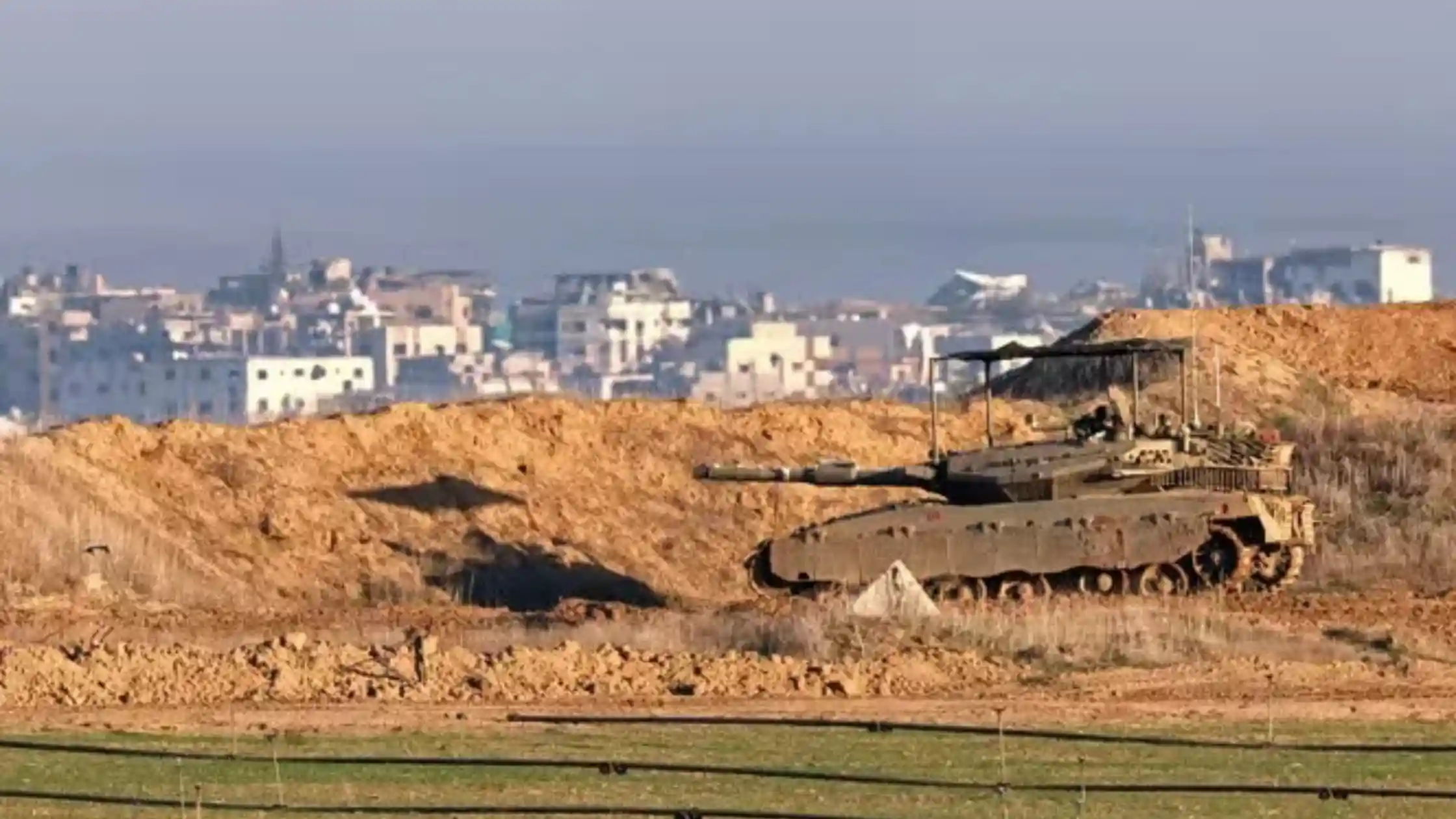Key Details of Phase 1 of Israel-Hamas Gaza Ceasefire Deal
Israel would reportedly keep a buffer zone within Gaza during the first phase of the proposed ceasefire agreement.
Israel’s cabinet has approved a ceasefire deal with Hamas, which will start on Sunday, January 19, bringing a pause to the 15-month-long war in Gaza. The decision followed a meeting in which Israeli Prime Minister Benjamin Netanyahu’s cabinet agreed to the truce, despite opposition from some far-right members of the government.
The deal was mediated by Qatar and Egypt, with the United States also playing a role. The truce aims to end the conflict that began after Hamas launched a surprise attack on Israel on October 7, 2023.
Israel- Gaza Ceasefire Deal in Point
- The first phase of the ceasefire agreement will last 42 days. During this time, 33 hostages held by Hamas in Gaza will be released. Qatari Prime Minister Sheikh Mohammed bin Abdulrahman bin Jassim Al-Thani mentioned that the hostages will include civilian women, female recruits, children, the elderly, and those who are ill or wounded.
According to two sources close to the militant group, three Israeli women soldiers are expected to be released on Sunday evening. Hamas refers to all Israeli citizens of military age as soldiers.
Israel’s government spokesperson, David Mencer, said that in exchange for the hostages, Israel was willing to pay a high price in the hundreds. The first exchange will see the release of up to 95 Palestinian prisoners. According to the AP news agency, Israel’s Justice Ministry has released a list of over 700 Palestinian prisoners who will be freed under the ceasefire deal. However, it is not clear if the 95 prisoners are part of the 700. Israel also stated that it cannot release anyone before 4 p.m. local time on Sunday.
Three points have been set up: one at Kerem Shalom, one at Erez (both border crossings with Gaza), and one in Reim, to the east of the region. Hostages will be brought to these points, where doctors and mental health specialists will examine them. Afterward, they will be taken to hospitals in Israel by helicopter or vehicle.
Israeli forces will pull back from densely populated areas of Gaza for the first 42 days to allow for the exchange of prisoners and the return of displaced Palestinians. An Israeli military official mentioned that they have developed a “revised defensive plan,” which includes strengthening border defenses along the Gaza Strip.
Although Israeli troops will retreat from certain areas and routes within Gaza, residents will not be allowed to return to places where Israeli forces are stationed or near the Israel-Gaza border. During the first phase of the ceasefire deal, Israel will maintain a buffer zone within Gaza, reportedly up to 800 meters inside from the Rafah area in the south to Beit Hanun in the north.
Israeli troops will not fully leave Gaza until all hostages are returned, but displaced Palestinians will be allowed to return through an electronic checkpoint with cameras.
Second Phase Negotiations
An Israeli official said earlier this week that talks for the second phase of the ceasefire will start on the “16th day” of the first phase.
Qatari Prime Minister Sheikh Mohammed stated that the countries involved in mediating the deal—Qatar, Egypt, and the US—will monitor the truce closely through a body based in Cairo. He expressed hope that this would be the final phase of the war and that all parties would stick to the terms of the agreement.
Outgoing US President Joe Biden also stated that the second phase of the truce would lead to a “permanent end to the war.” This phase would involve the release of all remaining hostages who are still alive, followed by the withdrawal of all Israeli troops from Gaza. He also mentioned there is a “clear mechanism to negotiate phases two and three.”

